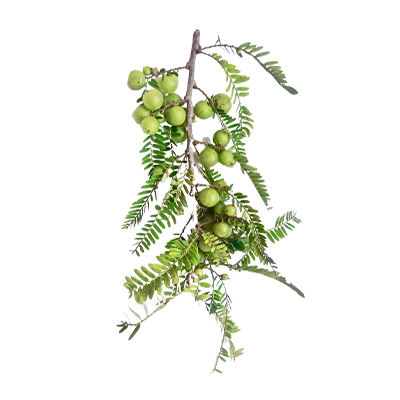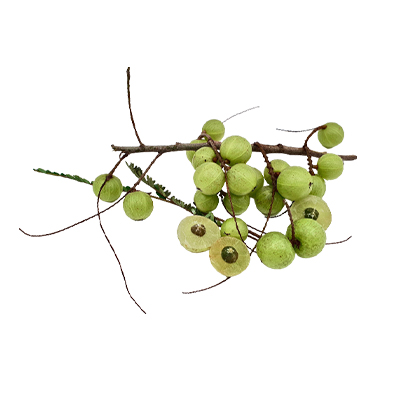Indian Gooseberry
Phyllanthus emblica L.
Phyllanthaceae
Location in our garden
Orchard
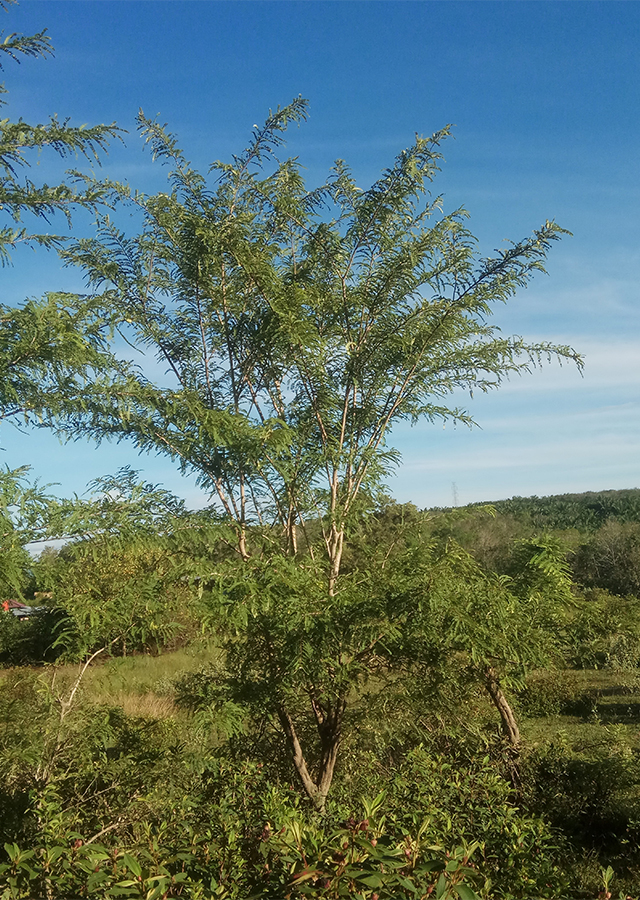
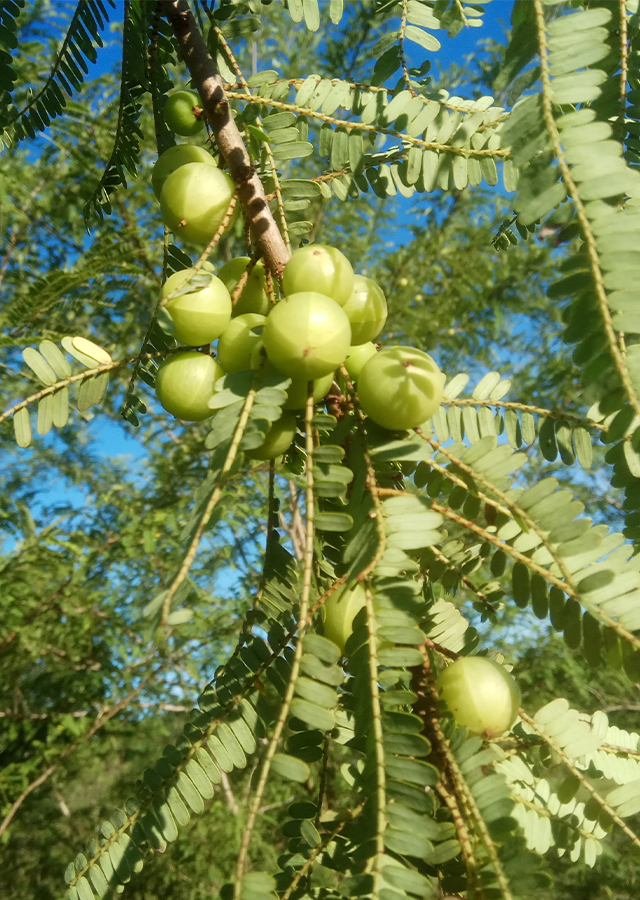
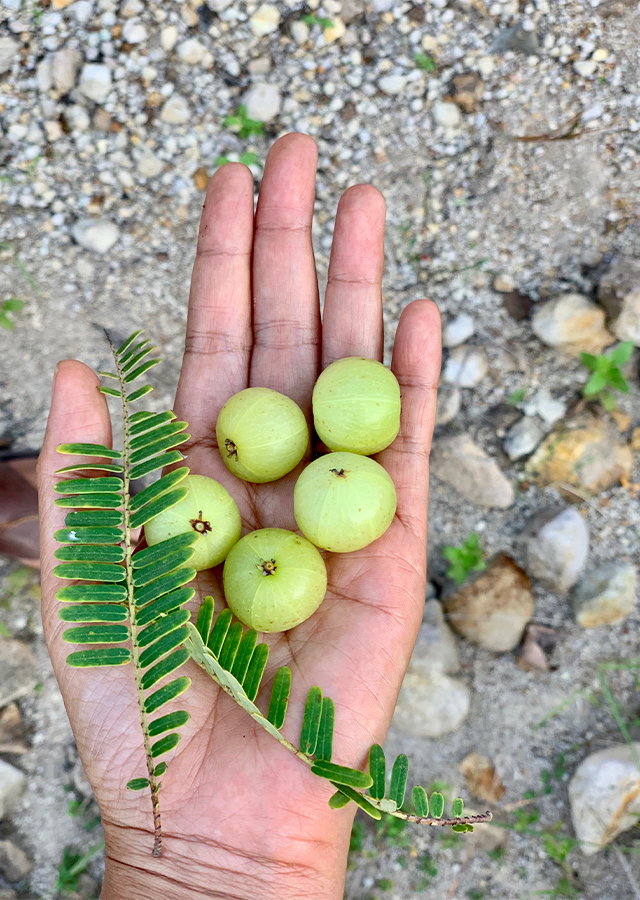
Synonym
Cicca emblica (L.) Kurz
Cicca macrocarpa Kurz
Diasperus emblica (L.) Kuntze
Habitus
Trees. Deciduous shrub or small tree, occasionally can reach up to 30 m tall.
Part Used
Leaves
Seeds
Fruit
Growing Requirements
Full Sunshine
Need Shade
Habitat
Forest
Overview
It is indigenous to Nepal, India and Sri Lanka, throughout South-East Asia to southern China. It is widely cultivated for its edible fruit and as a medicinal plant throughout its natural area of distribution, particularly in India, and also in the Mascarene Islands, the West Indies, Central America, and the West Indies and Japan. Formerly it was cultivated in Madagascar.
Vernacular Names
Mai kham (Burmese), Amlag (Arabic), An mo le (Chinese), Mak kham Pom (Laos), Nelli (Philippines), Ma-khaam pom (Thailand), Amalanbaum (German).
Agroecology
The species is not fastidious of soil type, prefers a pH in the range 6-8. It grows best in areas where annual daytime temperatures are within the range 20-29 °C, annual rainfall in the range 1,500-2,500 mm. Indian gooseberry grows in tropical and subtropical regions from near sea level to 1,500 m altitude. It is photosensitive, only producing flowers at a day length between 12 and 13.5 hours.
Morphology
- Stems - often crooked and gnarled, up to 35 cm in diameter; bark thin, smooth, grey, peeling in patches, with numerous knobs, main branches angular and densely pubescent.
- Leaves - on the main branches are deltoid-squamiform, resembling stipules.
- Flowers - greenish-yellow, fascicled in axils of leaves or fallen leaves, unisexual. The male flowers are numerous at base of young twigs, the female flowers solitary and higher up the twig.
- Fruits - a depressed globose drupe 2–4 cm in diameter, pale green changing to yellow when mature with six vertical striations. The fruit skin is thin, translucent and adherent to the very crisp, juicy, concolorous flesh.
- Seeds - 4–5 mm × 2–3 mm.
Cultivation
- Propagation is by seed, it is taken from over ripe fruits, which are sun dried. In 4 months, seedlings will have a stem diameter of 8 mm and can be budded or grafted if required.
- Semi hardwood cuttings, collected from the middle portions of vigorous shoots of young
Chemical Constituents
Tannins (proanthocyanidins, gallotannin, ellagitannin, galic acid, ellagic acid) dan flavonoids (kaempferol), polifenol, bisabolane-type sesquiterpenoid.
Traditional Medicinal Uses
- It exhibited potent antioxidant activity as compared to vitamin C.
- The tannoid principles are potent inhibitors of aldose reductase and may be effective in the management of diabetic complications, including catarac.
- Fruit extracts exhibited cholesterol lowering, antitussive, anti ulcerative and hepatoprotective properties and showed potent inhibitory activity on HIV reverse transcriptase.
- The juice of the fruit is also given in order to strengthen the pancreas of diabetics, as well as in the treatment of eye problems, joint pain, diarrhoea and dysentery.
- In Thailand emblic fruits are used as an expectorant, antipyretic, diuretic, antidiarrhoeal and antiscorbutic.
Part Used
Reference Sources
- Fern, Ken. (2019). Useful Tropical Plants Database. Phyllanthus emblica. http://tropical.theferns.info/viewtropical.php?id=Phyllanthus+emblica. 02-02-2021.
- Lim, T.K. (2012). Edible Medicinal And Non Medicinal Plants - Fruits Vol. 4: 258-296.
- NCBI. (2016). Chemical constituents from Phyllanthus emblica and the cytoprotective effects on H2O2-induced PC12 cell injuries. https://pubmed.ncbi.nlm.nih.gov/24993870/. 02-02-2021.
